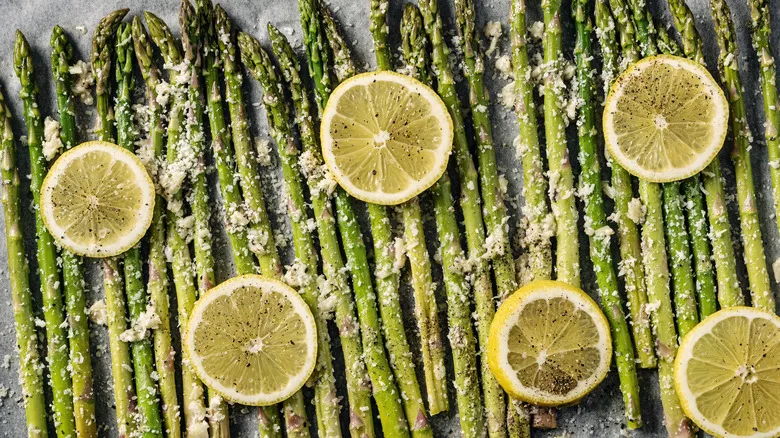1. Using stalks that are too old or too young

The age of asparagus is important. Purchasing asparagus that is too mature can result in fibrous stalks and flower heads that may be starting to open. However, this doesn't mean that younger asparagus is always superior in taste or easier to prepare. In fact, younger asparagus can often be more challenging to work with.
While it's true that many young vegetables, such as carrots, potatoes, broccoli, and spinach, tend to be more tender (and it seems that most vegetables might be more delicate when young), asparagus is an exception. These delicious green spears are fibrous on the outside but tender on the inside. As asparagus matures, it becomes thicker, providing a more succulent and sweet interior (until it becomes too old and tough again). In contrast, younger asparagus has more skin and fiber, which helps it grow tall in its early stages, making it more prone to being stringy compared to its older counterparts.
2. Assuming thinner is better
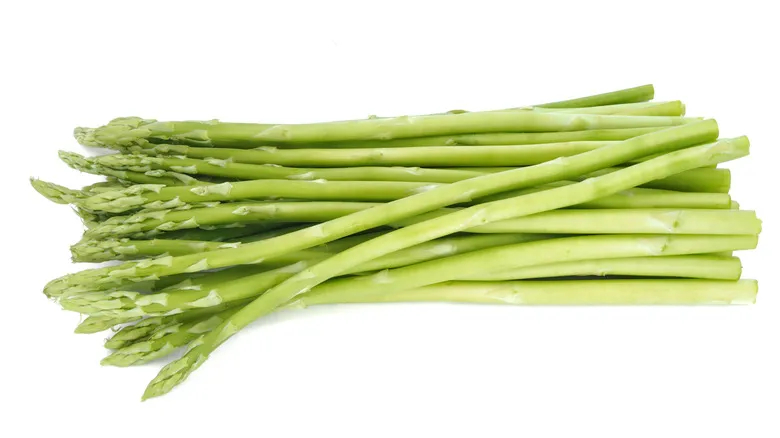
It's understandable to wonder how we, as home cooks, arrived at such a misguided belief about the age and size of asparagus. The explanation largely lies in a marketing strategy. When asparagus is first planted, farmers cannot harvest any for a year, and it takes three to four years for robust, thick spears to develop. However, nowadays, farmers often pick the less desirable, slender spears that emerge in the second year. Instead of discarding this crop, grocery stores have adopted "gourmet" labels to create the impression that these delicate, thinner asparagus are superior.
Be cautious of stalks that are too small, as they tend to become limp and floppy during cooking, while their fibrous skins remain stringy. It's essential to monitor them closely, but even then, it can be challenging to prevent overcooking — they may either scorch quickly in a pan or turn into a mushy gray in water. Consequently, many experts suggest reserving them for raw dishes. Regardless, avoid selecting stalks thinner than approximately ? inches, which is the recommended minimum for harvesting.
However, the notion that thicker is always better doesn't apply universally. You should steer clear of asparagus that has an odd, wide appearance, as it may have become too tough and less visually appealing. Aim for asparagus that is around ½ inch wide (or slightly larger), as this size strikes a good balance between tenderness and freshness.
3. Not matching the width to the recipe
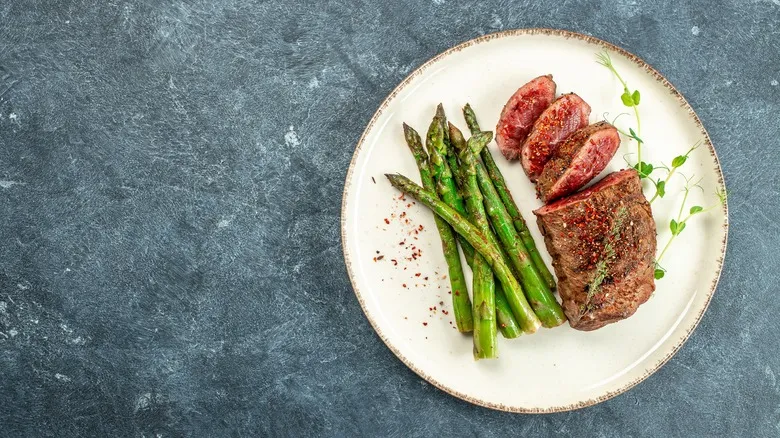
Now that you’re familiar with the differences between thick and thin asparagus, here’s the real insight: size isn’t as crucial as how you prepare it. Asparagus is a highly adaptable vegetable, but it’s important to pair it with recipes that suit its thickness. For example, young asparagus is perfect for a quick sauté with seasonings, while medium-sized asparagus works well in pasta dishes. Thick, mature asparagus shines when grilled, roasted, or shaved into salads.
To achieve the best results, it’s essential to know your recipe before heading to the store for your stalks. Often, recipes will indicate the preferred asparagus size, which suggests the author has a solid understanding of the ingredient. If the recipe doesn’t specify, pay attention to cooking times. Thin spears are ideal for quick blanching or tossing in a pan, but opt for medium or large stalks if you’re cooking them alongside other vegetables or grilling them.
4. Using stalks of different sizes
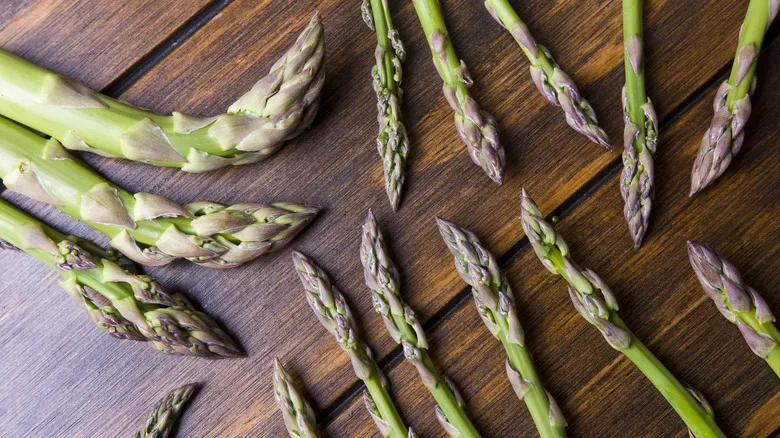
Similarly, it's important to match the size of your asparagus spears to the recipe and cooking time. Mixing thicker and thinner spears can lead to uneven cooking, resulting in some being undercooked and crunchy, while others become overcooked and mushy. If you can't find enough spears of the same size, consider altering your dish—perhaps opt for a salad featuring shaved asparagus instead of a dish focused solely on asparagus.
Another approach for using asparagus of varying sizes is to blanch them according to their size, then chop them up for your recipe without additional cooking. For example, you can toss blanched spears into pasta, use them as a salad topping, or wrap them in cold prosciutto for a charcuterie board. However, be cautious with recipes that require extended cooking times, like quiche or soup. Keep in mind that blanching times differ based on spear size: small spears typically take about two minutes, while larger ones may need around four. And don’t forget to prepare an ice bath!
5. Buying second-rate asparagus
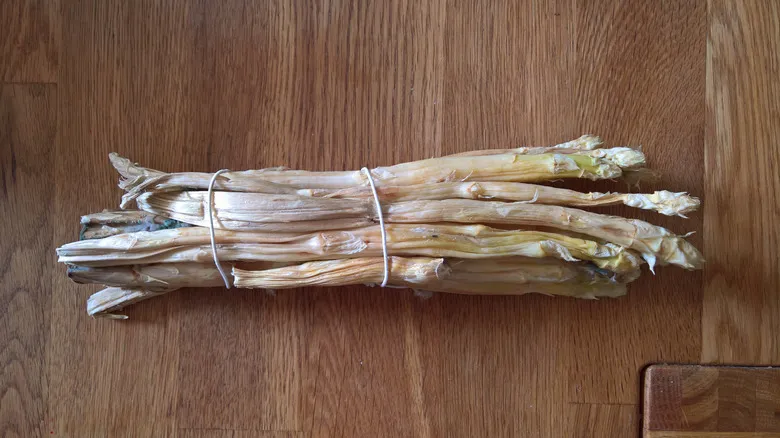
We’re all human, and it’s easy to let your plans slip and settle for a subpar dinner option. However, don’t compromise when it comes to asparagus. If you arrive late at the farmers market, opt for inferior spears at a regular grocery store, or pick limp, old bundles, you’ll regret it. The consequences extend beyond just your meal—some studies suggest that less fresh asparagus can lead to unpleasant-smelling urine. Since even the typical asparagus odor can be bothersome, it’s best to steer clear of this issue (and if you think you’re immune, reconsider; about a third of people can’t detect it, but that doesn’t mean it’s not occurring).
To avoid undesirable flavors and outcomes, purchase fresh, local asparagus from the farmers market, a roadside stand, or your neighborhood grocery store. You can determine freshness by taking a spear and holding it upright; it should stand tall. Look for a vibrant green color that fades to white at the bottom, with closed tips, firm stalks, and consistent coloring throughout.
6. Prepping too far in advance
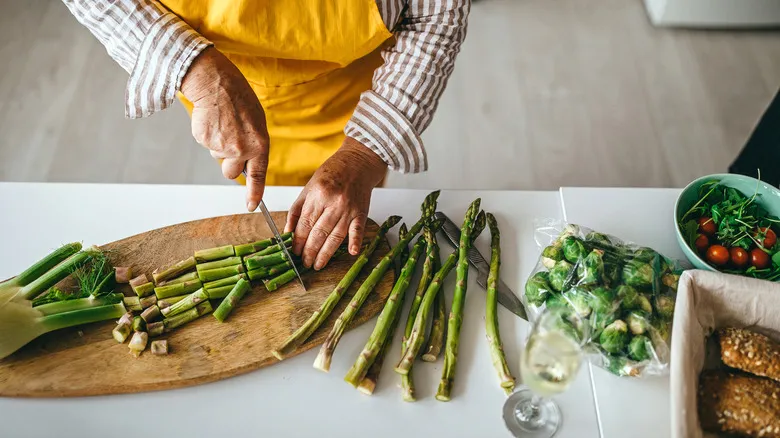
It's easy to get carried away and prepare vegetables well ahead of a festive meal... or if you're one of those impressive individuals who does their shopping on Sunday and then spends hours chopping and organizing (Seriously, please share your secrets with the rest of us). However, this can result in less-than-ideal outcomes for your asparagus.
Why is that? If you prepare your asparagus too early, you'll end up drying out the stalks. They've already been trimmed and have had to scab over once. Avoid creating more chances for moisture loss by cutting the ends too soon. This can lead to wilting, toughness, and an overall diminished quality.
The silver lining is that if you do accidentally dry out your asparagus, you can rehydrate it before cooking. If you feel the need to trim the stems in advance, try the flower method and store your asparagus upright in a jar of water in the fridge.
7. Failing to soak before cooking
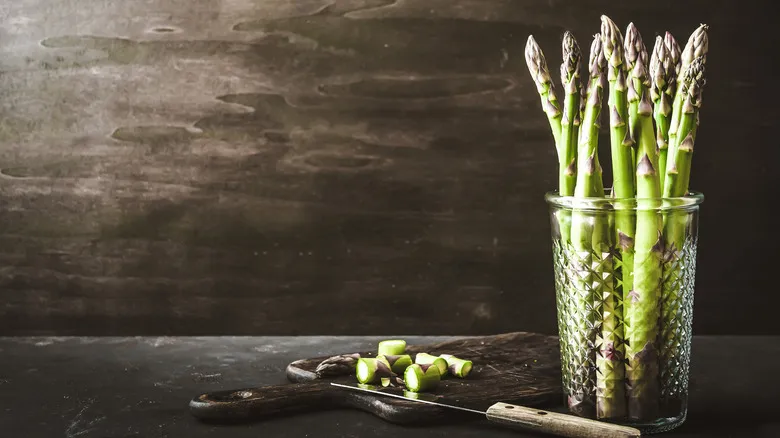
If you've recently bought your asparagus from a farmers market, picked it from your garden, or harvested it from your backyard, you can skip the soaking step. As long as the spears are vibrant in color and firm to the touch, you're all set.
However, if you’ve obtained asparagus from a regular grocery store, it’s likely been sitting around for a while. Seasonal asparagus tends to be much fresher when sourced locally. If it has traveled from far-off places like Argentina, it’s probably not freshly harvested. To put it in perspective, that’s a journey of about 9,000 kilometers to reach the U.S.
Given that long trip, the asparagus may have dried out, so it’s a good idea to soak your spears. Fortunately, rehydrating them is simple. Just cut off the woody ends of the stems and place the asparagus in water for about 5 minutes to restore its crispness. Just be careful not to soak them for too long, as they could become soggy. If you’ve kept your asparagus in a jar of water in the fridge, soaking isn’t necessary.
8. Not questioning the snap method

Alright, let’s dive into a bit of controversy. The snap method is a technique many home cooks learned growing up: hold a stalk in your hands and gently bend it until it breaks. This is believed to be the natural point where the asparagus turns woody, allowing you to discard the bottom and cook the tender top... or is it?
Not necessarily. The point at which the stalk snaps can vary based on several factors, including freshness, thickness, and your individual snapping technique. While you won’t damage your asparagus by using this method, you could be throwing away a significant amount of perfectly good produce. Adding to the confusion is the common belief that thinner asparagus is inherently more tender, leading some to think it doesn’t need trimming at all. However, that’s a misconception; all asparagus has a woody base, even if some thinner stalks don’t snap when bent.
The best way to trim asparagus is to cut at the point where the stalk changes from green to white. If you’re cutting them in batches, be sure to align them by this transition point rather than by the ends, which is arbitrary. This way, you’ll consistently remove the right amount of stem and avoid the unpleasant experience of chewing on tough asparagus ends.
9. Overcooking it
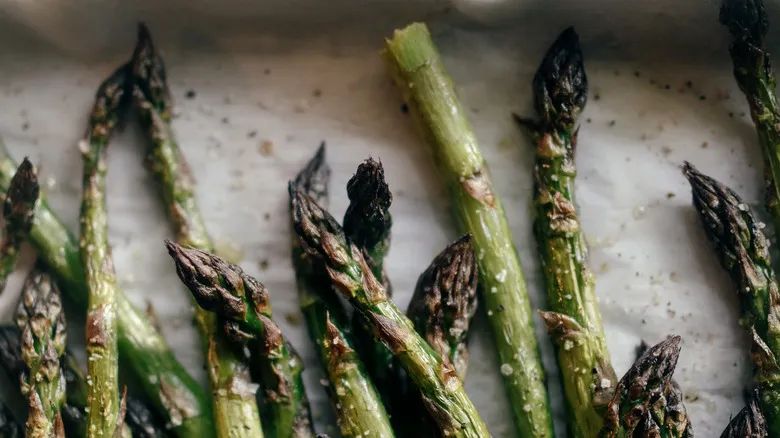
Asparagus can easily become overcooked, turning into a foul-smelling mush. Ideally, it should retain a bit of crunch and a vibrant green color. Look for shades reminiscent of fresh grass or leaves, rather than a dull military green. It’s essential that it maintains some brightness; otherwise, the only texture to counteract the mushiness will be its stringiness. Keep a close watch, as asparagus continues to cook even after being taken off the heat.
To prevent overcooking, consider using the blanch and shock technique. Adjust cooking times according to the size of the spears: two minutes for small ones and four minutes for larger ones. Once you take the spears or pieces out of the boiling water, immediately plunge them into an ice bath. This method is excellent for keeping your asparagus crisp and vibrant for salads, and it’s also effective for dishes like stir-fries where the ingredients won’t be cooked for long.
If you plan to pan-fry, grill, or broil asparagus, steer clear of a low-and-slow cooking method. The insides may overcook before the outside gets a nice sear. Instead, opt for high heat to achieve caramelization and char on the exterior while preserving its structure, and remove the spears even if they seem slightly undercooked. Stay alert: if you can smell asparagus, it’s likely already overcooked.
10. Not peeling it
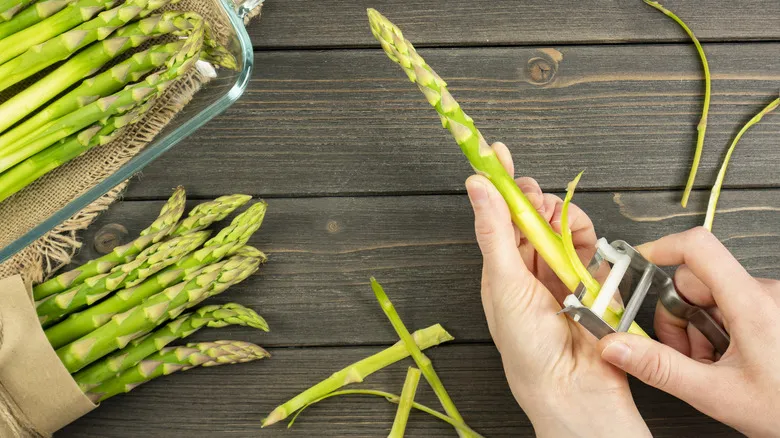
This topic is somewhat contentious. Numerous online resources suggest peeling asparagus to eliminate the tough outer skin, similar to how one would handle a stalk of broccoli. Conversely, some recommend leaving the skin intact and simply trimming the bottom to avoid the tougher parts. Given the differing opinions among experts, it’s best to rely on your own judgment.
If you haven't yet tried peeling asparagus, you definitely should. It's quite simple. Just grab a standard vegetable peeler (or a sharp knife if you prefer) and carefully remove the outer layer of skin from the bottom of the asparagus, where it begins to appear tough and fibrous. Be cautious not to take away any of the inner flesh, as it remains sweet and tender even at the base of the stalk.
By using the peeling method, you might find that you can finally abandon the bend-and-snap technique. Simply cut off the very woody end, and if there's still too much tough skin left, peel it away. This approach may help you waste less of the stalk.
11. Failing to experiment
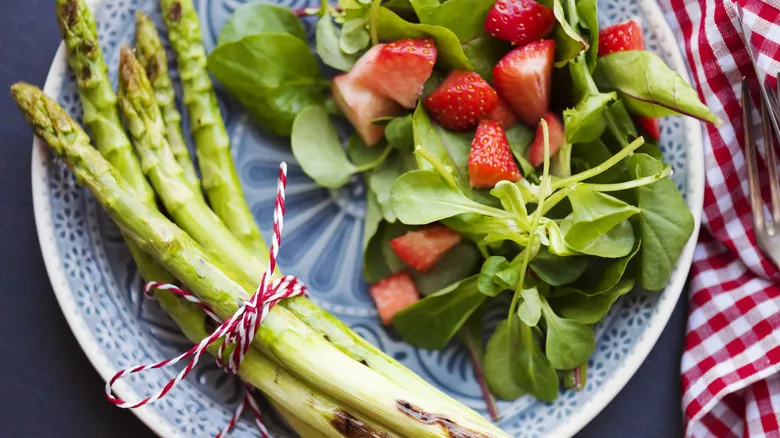
Asparagus can be enjoyed in a multitude of ways. While many people tend to find a single preparation method they love and stick to it, doing so limits your culinary experience. Even if you have a favorite recipe that everyone raves about (ideally one that includes some bacon), it's worth exploring new techniques in the kitchen.
This is particularly important if you haven't yet tried it raw. Many assume asparagus must be cooked, leading them to rely solely on heat-based methods, but raw asparagus offers incredible possibilities. If you haven't experienced a shaved or chopped asparagus salad, you're truly missing out. It's delightful when sliced thinly on the diagonal and tossed with olive oil, salt, and lemon juice. You can even use it shaved atop crostini or flatbread.
Don't overlook unique flavor pairings. Grilled asparagus with parmesan and honey mustard is a treat, as is chilled asparagus vichyssoise, which replaces traditional allium flavors with the spears' subtle sweetness. A sheet pan dinner featuring asparagus and chicken sausage is a simple, one-pan option. You can also prepare asparagus in the air fryer for a crunchy snack.
12. Forgetting about white and purple asparagus
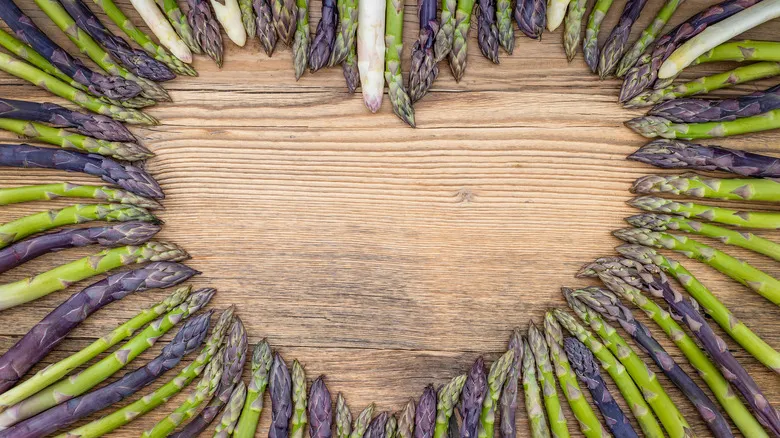
Did you know that asparagus comes in three different colors? It's true! You may have spotted at least one of these alternative varieties at your local grocery store or farmers market, even if you didn't realize it at the time. While green asparagus is the most common, there are also purple and white varieties.
White asparagus is essentially green asparagus that is cultivated in complete darkness or underground. The reason asparagus is green is due to chlorophyll, a natural pigment that forms when plants are exposed to sunlight. When asparagus is kept away from light, it doesn't produce this pigment, resulting in a pale white variety. It pairs wonderfully with hollandaise sauce, tahini-lemon dressing, or served alongside potatoes and ham in a traditional German style.
Then we have purple asparagus, which boasts a beautiful violet hue along the entire length of the stalks, although the tips do lighten like those of green asparagus. Originally cultivated in Italy, this variety is now available worldwide. Not only is it visually appealing, but it also contains 20% more sugar than its green and white counterparts, making it sweeter and more tender.
13. Not growing it yourself
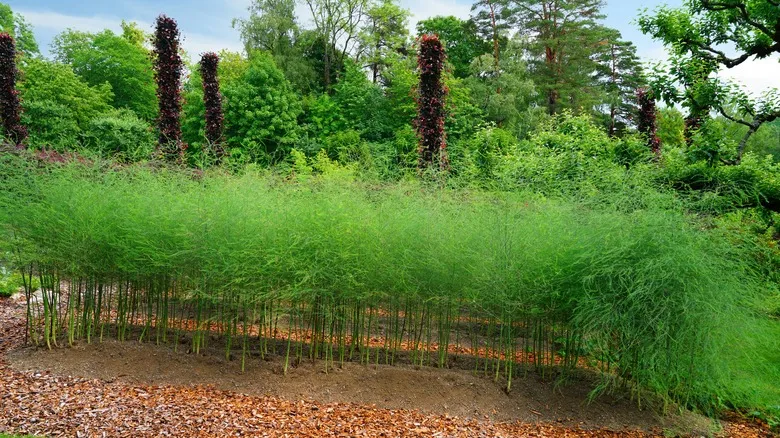
Growing asparagus at home is surprisingly simple. With well-drained soil and plenty of sunlight, you can cultivate a flourishing patch in just a few years. This perennial vegetable consistently yields harvests year after year from the same plants, and it’s fascinating to observe how asparagus appears in its natural state. If left unharvested, the spears transform into ferns that can reach heights of 3 to 4 feet, adorned with swaying green fronds, while female plants produce red berries in the summer.
If you decide to grow asparagus, it's best to purchase crowns online. These bare-root bundles resemble unusual, multi-fingered hands. Plant them at a depth of 5 to 8 inches; for heavier soils, choose a shallower depth, and for colder regions, plant deeper. Although asparagus will sprout in the first year, it's important to refrain from harvesting for at least a year to allow the roots to establish properly. Asparagus plants can thrive for 15 years or more, so you can look forward to enjoying the rewards of your efforts for many years ahead.
Recommended
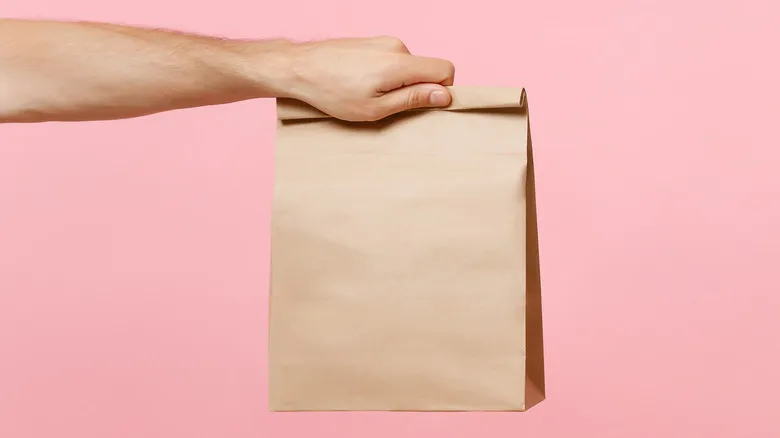
The Paper Bag Trick To Prevent Ice Cubes From Sticking Together

Why Is It Called Dijon Mustard?
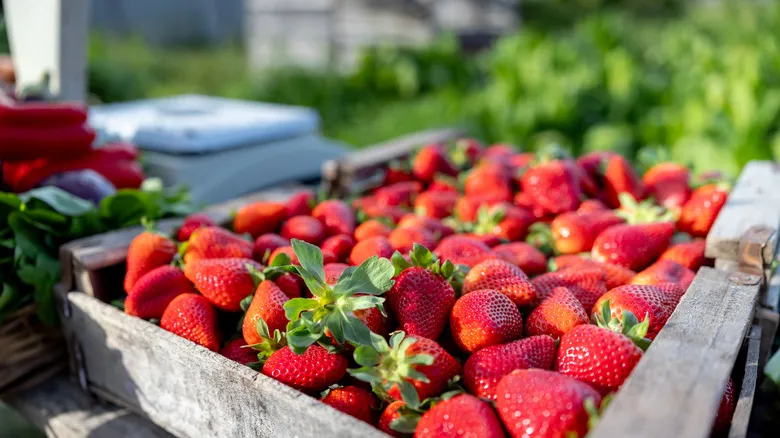
13 Storage Tips For Longer-Lasting Strawberries

Common Cutting Board Mistakes And How To Avoid Them
Next up

